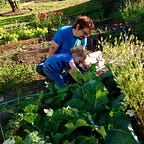The Late Quatrian Calendar
During the Late Quatrian/Early Pantarctican Era, when Quatrian societies were dealing with extreme changes in global climate (known in Old Quatrian as “The Blight”), Community Elders recognized the need for a different way of measuring natural cycles. Obviously, there can be no “Wheel of the Year” calendrical system in a global culture which depends upon Four Seasons, as “Seasons” change from climate to climate. However, instead of using the progression of the Sun/Moon/stars/planets to measure “time,” the Quatrians used the progression of weather and plant growth.
Increased climatological variability, however, necessitated a new understanding of natural cycles, and the creation/dissemination of a new set of “seasons” that Quatrians across their society could use. Instead of the prior six seasons (roughly equivalent to “Early Spring, Late Spring, Summer, Harvest, Autumn, Winter”), there were now thirteen Variable Seasons, used the way we use “months.”
The seasons in the Late Quatrian Calendar were mapped differently depending on where one resided, and were all “optional.” To illustrate how they were used, the following list maps each season with its approximate equivalent dates for someone located in a Temperate Climate (in this case, “Temperate Marine West Coast,” as this is where the author resides):
Cold Season (Nov 15-Mar 31)
Water Season (Oct 15-Apr 15)
Last Frost (Mar 15-Apr 15)
First Green (Feb 15-Apr 15)
Flower Season (Mar 1-Jul 15)
Fruiting Season (Apr 15-Sep 30)
Drought Season (Jun 16-Oct 15)
Fire Season (Mar 1-Oct 15)
Smoke Season (Jul 1-Oct 15)
Cooling Season (Sep 16-Oct 31)
Harvest Season (Jul 15-Nov 15)
Storm Season (Jul 15-Mar 15)
First Frost (Oct 15-Nov 30)
During some “years” and in some Biomes, some of the seasons wouldn’t ever occur (the Subtropics didn’t often have to plan around “First Frost” and “Last Frost,” for instance). In other “years,” the “dates” of the seasons would become even more variable.
Nonetheless, the complexity (2) of the Late Quatrian Calendar System suited the Quatrian understanding of the Cosmos as a place where Things That Happen are worked with, instead of fought against. As an example, a farmer of Bilm (3) under a previous, less flexible system might struggle to get a food allocation to a settlement if Harvest Season ended early or late. Under this calendar, orders were placed based on the variable seasons, so the settlement would expect a food allocation “when Harvest Season ended,” no matter when that might be. Farmers were therefore less stressed and better prepared to react to changes in climate.
TO BE CONTINUED…
Notes:
(1) The Old Quatrian “Wheel of the Year” was similar in theory to the current “Neopagan” understanding of the year, but differed from Biome to Biome (i.e. if someone lived in a Subtropical Rainforest, their calendar different slightly from someone in a Temperate Zone.
The surviving calendar system which resembles most closely the Old Quatrian is that of the Mapuche people of “Chile” and “Argentina.” The Mapuche Cultrun is a drum, a calendar, and a map of the cosmos all in one.
(2) If you think this calendar is complex, you should see the ones the Mayans used!
(3) Bilm is a long-extinct grass seed used by the Quatrians as a staple grain.
